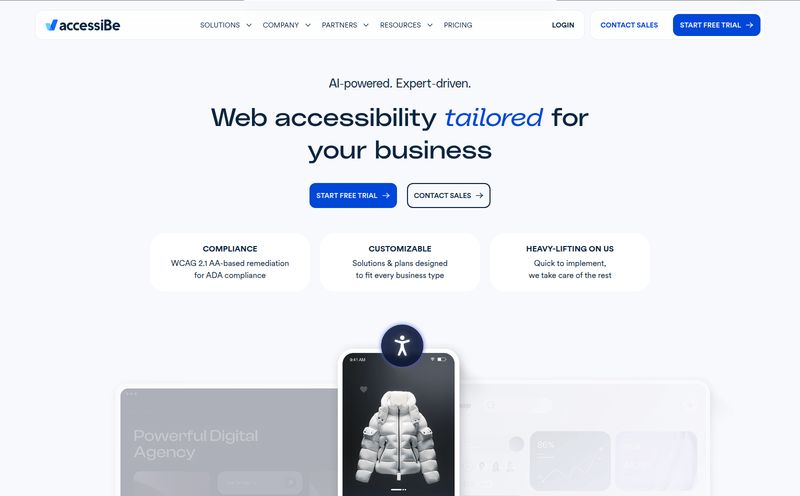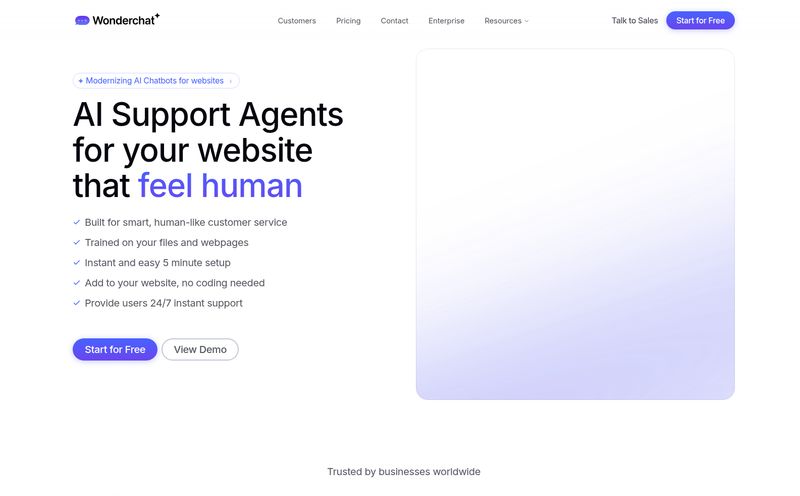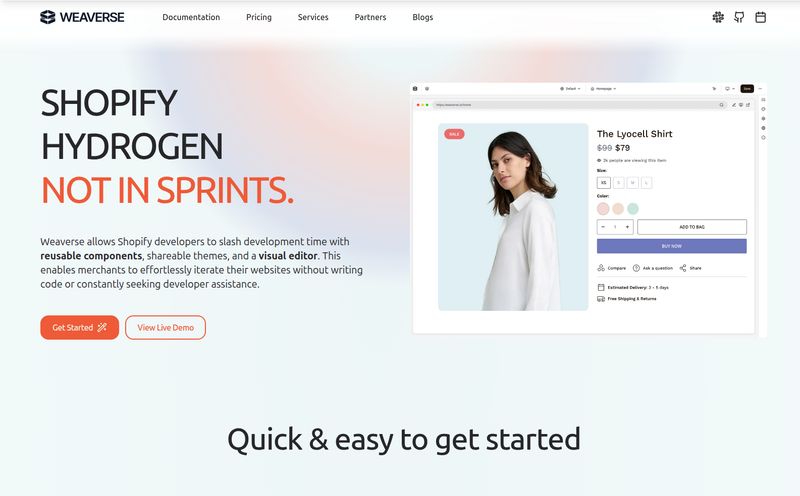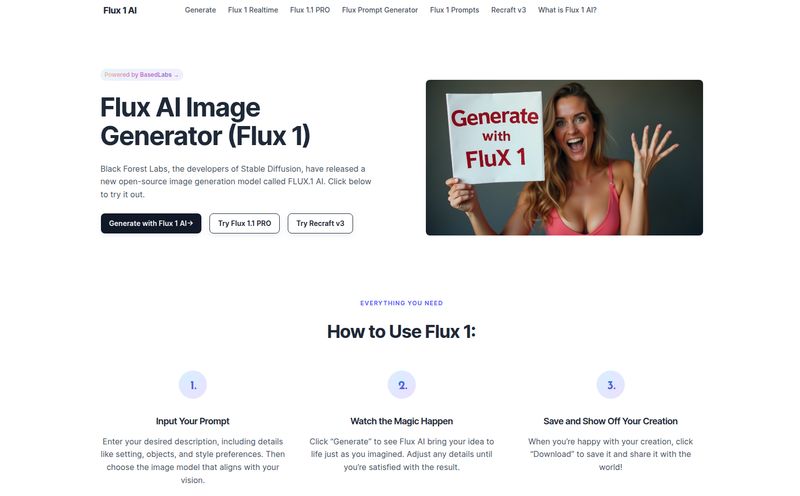I stumbled across a piece of generated text the other day that gave me a chuckle. It started with, “Where no one has gone before,” and went on about shared humanity. It felt like a mashup of a Star Trek captain’s log and a late-night philosophy session. The source? An AI model running on a surprisingly simple tool called Local AI Playground.
And that’s what I want to talk about today. Because let’s be real for a second. The barrier to entry for a lot of AI experimentation is... high. Like, “sell-a-kidney-for-a-new-NVIDIA-card” high. For years, we’ve been told that to really play with powerful AI models, you need a beast of a machine with a top-tier GPU, a complex Python environment, and the patience of a saint to wrestle with dependencies. It’s been a huge gatekeeper for hobbyists, students, and even some developers.
But what if you could sidestep all that? What if you could just… download an app and start experimenting? That’s the promise of Local AI Playground, and honestly, I was skeptical. But after spending some time with it, I’m genuinely intrigued.
So, What Exactly Is This Local AI Playground?
Think of it as a self-contained sandbox for AI. It's a native application for your computer that lets you download, manage, and run AI models without needing a full-blown machine learning stack. The big headline here is that it’s built for CPU inferencing. In plain English, it runs on your computer’s main processor, no expensive, power-hungry graphics card required.
This approach strips away the layers of complexity. You're not setting up Conda environments, not fighting with CUDA drivers, and not racking up a massive cloud computing bill. You download the app, you pick a model, and you start tinkering. It’s all local, all private, and surprisingly lightweight. It’s like having a personal AI chemistry set, but without the risk of blowing up your garage (or your credit card).
The Real Magic: Why CPU-Only Is a Game Changer
For a while now, the AI world has been obsessed with GPUs. And for good reason! They are incredibly good at the parallel processing required for training and running massive models. But this has created a bit of an arms race. If you're not rocking a recent RTX card, it can feel like you're being left out of the conversation. I've talked to so many developers who have amazing ideas but are hamstrung by hardware limitations.
A tool like Local AI Playground changes that dynamic. By focusing on CPU inferencing, it democratizes access. Suddenly, anyone with a reasonably modern laptop can start exploring what these models can do. It's not about training the next GPT-5 on your MacBook, its about making AI experimentation accessible to everyone. The privacy aspect is a huge win too. Your experiments, your data—it all stays on your machine. In an age of constant data leaks and privacy concerns, that’s a breath of fresh air.
Getting Your Hands Dirty: A Walkthrough of the Experience
Alright, so what’s it actually like to use? The setup is dead simple. You install the native app, and you're greeted with a clean interface. The core of the experience is the model management.
You can browse and download various open-source models directly within the app. The tool handles everything. Once downloaded, the models are listed neatly, and you can sort and manage them. One feature I particularly appreciate, as a security-conscious person, is the digest verification. The app can verify model files using BLAKE3 and SHA256 hashes. This ensures the model you downloaded is the one you intended to download, with no nasty surprises tucked inside.

Visit Local AI Playground
Once you have a model, you can spin up a local inference server with a click. This is fantastic. It essentially creates a mini-API on your computer that you can send requests to. There's a quick inference UI for firing off simple prompts and seeing the output—like that philosophical Star Trek monologue I mentioned earlier. It’s snappy for smaller models, and watching the text stream in real-time on your own machine without a cloud server in sight feels a little bit like magic.
The Good, The Not-So-Good, and The Future
No tool is perfect, right? So let’s get into the nitty-gritty. After putting it through its paces, here's my honest breakdown.
What I Absolutely Loved
The simplicity is number one. I can't overstate how nice it is to bypass the usual setup hell. The fact that it's a compact, memory-efficient application is a huge plus. It’s not some bloated software that takes over your entire system. The privacy of local-first experimentation is another major selling point for me. And of course, the main benefit: no GPU needed. This opens the door for so many people.
Some Things to Keep in Mind
Now for the reality check. This tool is built for CPU inferencing. That means you're not going to be running the most computationally intensive models at lightning speed. It's fantastic for experimentation and smaller models, but it won't replace a dedicated GPU rig for heavy-duty work. The developers are transparent about this, and they've mentioned that GPU inferencing is on the roadmap, which is super exciting.
Also, it's still a growing platform. Some of the more advanced features you might expect, like a sophisticated model explorer or a global model search, are still listed as under development. This isn’t a con so much as a heads-up: you're getting in on the ground floor of a cool project.
Who Is Local AI Playground Actually For?
So who should download this right now? In my opinion, the ideal user is someone who is 'AI-curious'.
- Developers who want to quickly prototype an application that uses an LLM without committing to a cloud service.
- Students and educators who need an accessible, free tool to teach and learn about AI concepts.
- Hobbyists and tinkerers who want to play with different models and see what they're capable of.
- Writers and creatives who want a private, local tool for brainstorming and text generation.
If you're a data scientist at a major corporation with a massive budget for compute resources, this probably isn't going to replace your workflow. But for the rest of us? It’s a brilliant entry point.
What About the Price Tag?
This is often the first question people ask, and the answer is a good one. Based on all the available information, Local AI Playground appears to be free. There’s no pricing page, no subscription model mentioned. It seems to be a project aimed at building a community and making technology accessible. As always, it’s a good idea to check the official source for the most current information, but for now, it seems your wallet can breathe easy.
Frequently Asked Questions
Do I really, truly not need a GPU?
That's the main draw! Local AI Playground is designed specifically for CPU inferencing, so you can run it on most modern computers and laptops without a dedicated graphics card. Performance will vary depending on your CPU, of course.
Is Local AI Playground safe and private to use?
Yes. Since everything runs locally on your machine, your prompts and the model's generations never leave your computer. This makes it a very private way to experiment. The inclusion of file verification with hashes like BLAKE3 also adds a nice layer of security.
What kind of AI models can I run on it?
You can run a variety of open-source models that are optimized for CPU performance. You won't be running the absolute largest, state-of-the-art models that require entire server farms, but there's a huge ecosystem of powerful and interesting models that work perfectly.
Is GPU support ever coming?
According to the project's information, yes! GPU inferencing is an upcoming feature. This would be a fantastic addition, allowing users with capable hardware to get even more performance out of the tool.
Is it hard to set up?
Not at all. It’s a native application, so the setup is much simpler than traditional ML frameworks. You download it, install it, and you're pretty much ready to start downloading models and experimenting. No command line wizardry required.
A Welcome Step in the Right Direction
I get excited about tools like Local AI Playground. Not because they're going to dethrone the big cloud providers, but because they challenge the idea that AI has to be expensive and complicated. They lower the barrier, invite more people in, and foster a culture of experimentation and learning.
It’s a simple, elegant solution to a common problem. It puts the power of AI back into the hands of the individual, letting them explore, create, and learn on their own terms, on their own machine. And in this crazy, fast-moving industry, that’s a mission I can definitely get behind.
References and Sources
- To learn more about the tool and download it, you'll want to find the official website for Local AI Playground.
- For a great source of compatible models, check out a repository like Hugging Face.
- For context on the GPU market, articles from tech sites like The Verge or AnandTech often cover hardware trends.



